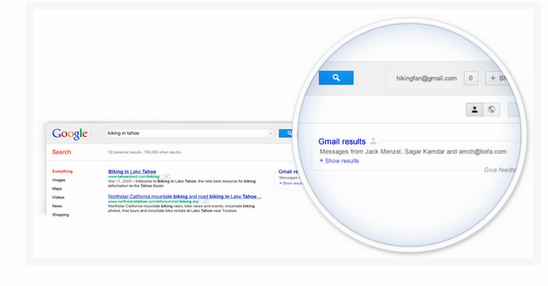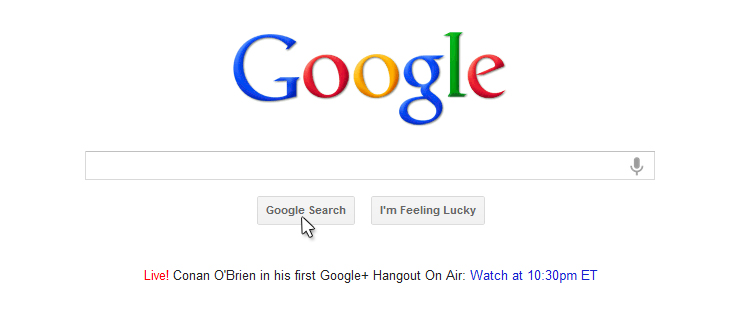Google announced its latest search update late Friday, capping off a week of new developments from the company. Amit Singhal, senior vice president of engineering for Google, detailed the new ranking signal on the company’s Inside Search blog, writing that sites receiving copyright complaints, whether in relation to the Digital Millenium Copyright Act or otherwise, may be penalized.
According to Singhal, the amount of complaints the company receives related to violations of various copyrights has skyrocketed since 2009. In fact, he reported that Google currently processes more complaints per day than it did in all of 2009. In the last 30 days, Google has received more than 4.3 million petitions related to different URLs.
As part of its ongoing goal of bringing the highest-quality content to searchers, penalizing sites with frequent copyright complaints ensures users are always directed to legitimate sites offering licensed content. These issues are frequently associated with music and film piracy, but content marketing campaigns should also keep an eye on the originality of their site content. Brafton reported that including a copyright and usage clause on a site can safeguard a company from exploitation of its content. Should another site improperly use branded content, the presence of usage guidelines makes it easier to demand the content be removed.
Aside from Friday’s announcement, Google also revealed some new innovations to its SERPs. On Wednesday, Singhal detailed two additions that the company believes will help users find the content most relevant to their queries. On the Official Google blog, Singhal wrote that users will now see a new element of its Knowledge Graph, Carousel. The tool inserts a series of images with links to related searches above the standard web results and primary Knowledge Graph entry.
Brafton reported that the addition addresses two main focuses of Google, making its products and services more visual and guiding users to relevant content. The feature has been rolled out to all English-speaking countries. The other announcement from Google will be experienced on a much smaller scale for the time being. According to Singhal, users can now test the addition of Gmail results on their SERPs if they choose. The first 1 million users that sign up for the trial will see a small menu in the top right corner of the page that brings content from their Gmail inboxes related to their queries. Users can click on the tool to bring up all of the messages from their emails that include that term. While it’s unclear if this will ultimately become a default feature or an optional add-on, it certainly continues the company’s desire to unify its various products into a single web platform.
The SEO implications for each of these new features are unknown, but more data on SERPs demonstrates the need to create relevant website content. Part of the continued dominance of Google’s search engine is driven by the prominence of its web browser, Chrome. Since launching four years ago, Chrome has developed a strong user base, and StatCounter recently found it is the No. 1 web browser in the world. This week, StatCounter said Chrome has eclipsed Microsoft’s Internet Explorer for the first time. According to the report, Chrome now accounts for 33.8 percent of the browser market, compared to IE’s 32 percent.
Brafton reported that Chrome’s rise makes Google SEO and Google+ important part of a marketing mix given the seamless integration between the browser and the company’s other products.
While the major news of the week came from Google, Bing’s Duane Forrester continued his recent series of blogs urging marketers to focus their web marketing and SEO efforts on engagement and thought leadership. Forrester urged companies to develop strategies that help drive visibility for their brands. Search, content and social media marketing help companies increase their visibility and foster trust with their prospects. Brafton highlighted Forrester’s comment on Monday. Every element of a web campaign pushes prospects and existing customers to trust a business more.
Consistently innovating content types and channel presences will help marketers keep their sites fresh and attract new audiences. One marketing innovation many top brands have made recently is a move to Instagram, which 40 percent of the world’s most recognizable companies have adopted, according to Simply Measured.
Consistently innovating content types and channel presences will help marketers keep their sites fresh and attract new audiences. One marketing innovation many top brands have made recently is a move to Instagram, which 40 percent of the world’s most recognizable companies have adopted, according to Simply Measured. Adding visual content to a social marketing presence with Instagram can help businesses appeal to the more than 80 million users of the photo-sharing tool. Brafton reported that using Instagram can also improve efforts on Facebook, Twitter and other platforms where visual content drives engagement.
Another social network that has seen an emphasis on visual content result in greater attention is Pinterest, which removed the invite-only wall that had been in place since March 2010 this week. Brafton reported that users can either create a Pinterest-specific account or use their Facebook or Twitter data to log into Pinterest. The site’s heavy focus on relevant visual content and linking makes it an ideal way to boost visibility with images and traffic by sharing links.
Visual content’s value continues to grow, as more American access different image-heavy sites and online video more often. On Friday, AYTM Market Research found that more than 60 percent of consumers regularly watch both short video clips and longer videos on the web. Moreover, about half of respondents said they have made purchases or been positively influenced about a brand as a result of video marketing.
Brafton reported that video content is an increasingly appealing marketing tool due to the high volume of consumption on the web. Adding videos created with the same concepts of audience targeting and industry focus can attract prospects and add an element of diversity to a site.
Looking ahead to next week, web marketers will have their eyes turned to both New York and San Francisco where a large portion of the community will be taking part in two trade shows. Affiliate Summit East takes place from August 12 through the 14th, and Brafton will be attendance. Meanwhile, SES San Francisco runs from August 13 through the 17. With Duane Forrester, a keynote from Google, representatives from Google and Bing leading sessions and marketing experts leading round table discussions (including Brafton’s very own Katherine Griwert), there are sure to be plenty of headline-worty marketing developments to come.




